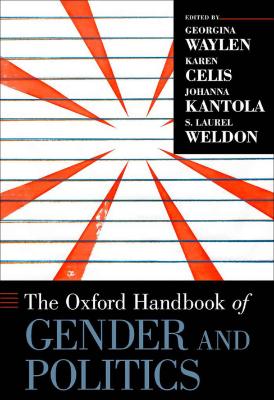
|
The Oxford Handbook of Gender and Politics
As a field of scholarship, gender and politics has exploded over the last fifty years and is now global, institutionalized, and ever expanding. The Oxford Handbook of Gender and Politics brings to political science an accessible and comprehensive overview of the key contributions of gender scholars to the study of politics and shows how these contributions produce a richer understanding of polities and societies.
Like the field it represents, the handbook has a broad understanding of what counts as political and is based on a notion of gender that highlights masculinities as well as femininities, thereby moving feminist debates in politics beyond the focus on women. It engages with some of the key aspects of political science as well as important themes in gender and feminist research (such as sexuality and body politics), thereby forging a dialogue between gender studies in politics and mainstream political science.
The handbook is organized in sections that look at sexuality and body politics; political economy; civil society; participation, representation and policymaking; institutions, states and governance as well as nation, citizenship and identity. The Oxford Handbook of Gender and Politics contains and reflects the best scholarship in its field.
|
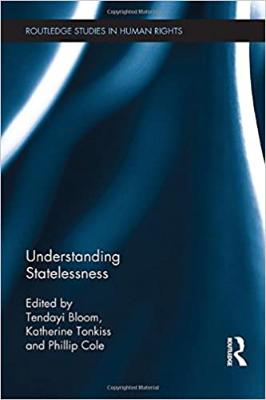
|
Understanding Statelessness
Understanding Statelessness offers a comprehensive, in-depth examination of statelessness. The volume presents the theoretical, legal and political concept of statelessness through the work of leading critical thinkers in this area. They offer a critique of the existing framework through detailed and theoretically-based scrutiny of challenging contexts of statelessness in the real world and suggest ways forward. The volume is divided into three parts. The first, ‘Defining Statelessness’, features chapters exploring conceptual issues in the definition of statelessness. The second, ‘Living Statelessness’, uses case studies of statelessness contexts from States across global regions to explore the diversity of contemporary lived realities of statelessness and to interrogate standard theoretical presentations. ‘Theorising Statelessness’, the final part, approaches the theorisation of statelessness from a variety of theoretical perspectives, building upon the earlier sections. All the chapters come together to suggest a rethinking of how we approach statelessness. They raise questions and seek answers with a view to contributing to the development of a theoretical approach which can support more just policy development. Throughout the volume, readers are encouraged to connect theoretical concepts, real-world accounts and challenging analyses. The result is a rich and cohesive volume which acts as both a state-of-the-art statement on statelessness research and a call to action for future work in the field. It will be of great interest to graduates and scholars of political theory, human rights, law and international development, as well as those looking for new approaches to thinking about statelessness.
|
|
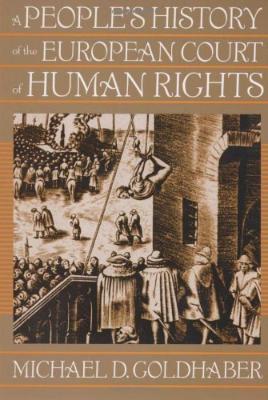
|
A People's History of the European Court of Human Rights
The exceptionality of America’s Supreme Court has long been conventional wisdom. But the United States Supreme Court is no longer the only one changing the landscape of public rights and values. Over the past thirty years, the European Court of Human Rights has developed an ambitious, American-style body of law. Unheralded by the mass press, this obscure tribunal in Strasbourg, France has become, in many ways, the Supreme Court of Europe.Michael Goldhaber introduces American audiences to the judicial arm of the Council of Europe―a group distinct from the European Union, and much larger―whose mission is centered on interpreting the European Convention on Human Rights.
The Council routinely confronts nations over their most culturally-sensitive, hot-button issues. It has stared down France on the issue of Muslim immigration; Ireland on abortion; Greece on Greek Orthodoxy; Turkey on Kurdish separatism; Austria on Nazism; and Britain on gay rights and corporal punishment. And what is most extraordinary is that nations commonly comply.In the battle for the world’s conscience, Goldhaber shows how the court in Strasbourg may be pulling ahead.
|
|
|
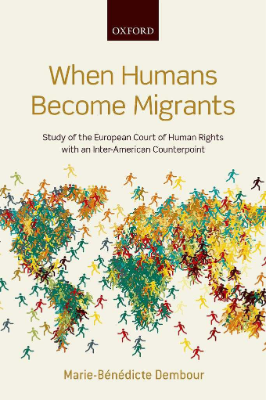
|
When humans become migrants: Study of the European Court of Human Rights with an Inter-American Counterpoint
The treatment of migrants is one of the most challenging issues that human rights, as a political philosophy, faces today. It has increasingly become a contentious issue for many governments and international organizations around the world. This book examines the way in which two institutions tasked with ensuring the protection of human rights—the European Court of Human Rights and Inter-American Court of Human Rights—treat claims lodged by migrants. It combines legal, sociological, and historical analysis to show that the two courts were the product of different backgrounds, which led to differing attitudes towards migrants in their founding texts, and that these differences were reinforced in their developing case law. The book assesses the case law of both courts in detail to argue that they approach migrant cases from fundamentally different perspectives. It asserts that the European Court of Human Rights treats migrants first as aliens, and then, but only as a second step in its reasoning, as human beings. By contrast, the Inter-American Court of Human Rights approaches migrants first as human beings, and secondly as foreigners (if they are). The book argues therefore that the Inter-American Court of Human Rights takes a fundamentally more human rights-driven approach to this issue. The book shows how these trends formed at the courts, and assesses whether their approaches have changed over time. It also assesses in detail the issue of the detention of irregular migrants. Ultimately it analyses whether the divergence in the case law of the two courts is likely to continue, or whether they could potentially adopt a more unified practice.
|
|
|
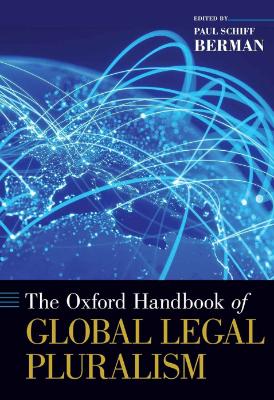
|
The Oxford Handbook of Global Legal Pluralism
Global legal pluralism has become one of the leading analytical frameworks for understanding and conceptualizing law in the twenty-first century. Wherever one looks, there is conflict among multiple legal regimes—some of which are state-based; some are built and maintained by nonstate actors; some fall within the purview of local authorities and jurisdictional entities; and some involve international courts, tribunals, and arbitral bodies, as well as regulatory organizations. Global legal pluralism has provided, first and foremost, a set of useful analytical tools for describing this conflict among legal and quasi-legal systems. At the same time, some pluralists have also ventured in a more normative direction, suggesting that legal systems might sometimes purposely create legal procedures, institutions, and practices that encourage interaction among multiple communities in order to foster dialogue across difference. Featuring works from a diverse set of authors touching on nearly every area of legal pluralism research, this book is the first comprehensive review of global legal pluralism scholarship ever produced. As such, it is a must-have for scholars and students seeking to understand the insights of legal pluralism to contemporary debates about law.
|
|
|
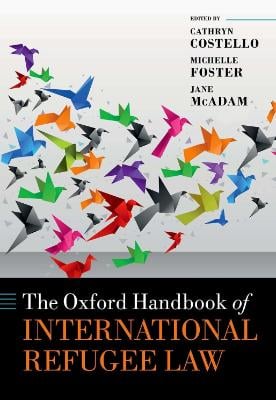
|
The Oxford Handbook of International Refugee Law
The Oxford Handbook of International Refugee Law is a comprehensive, critical work, which analyses the state of research across the refugee law regime as a whole. Drawing together leading and emerging scholars, the Handbook provides both doctrinal and theoretical analyses of international refugee law and practice. It critiques existing law from a variety of normative positions, with several chapters identifying foundational flaws that open up space for radical rethinking. Many authors work directly in the field, and their contributions demonstrate how scholarship and practice can mutually inform each other.
Contributions assess a wide range of international legal instruments relevant to refugee protection, including from international human rights law, international humanitarian law, international migration law, the law of the sea, and international and transnational criminal law. Geographically, contributors examine regional and domestic laws and practices from around the world, with 10 chapters focused on specific regions. This Handbook provides an account, as well as a critique, of the status quo, and in so doing it sets the agenda for future academic research in international refugee law.
|
|
|
|
|